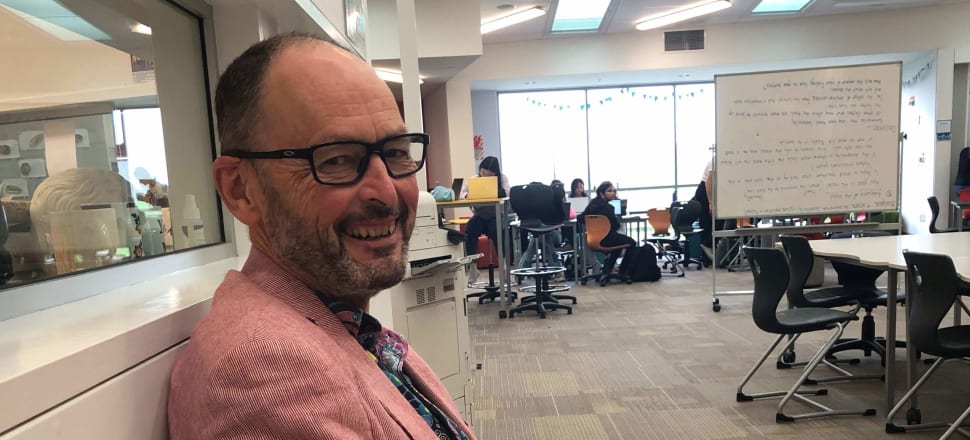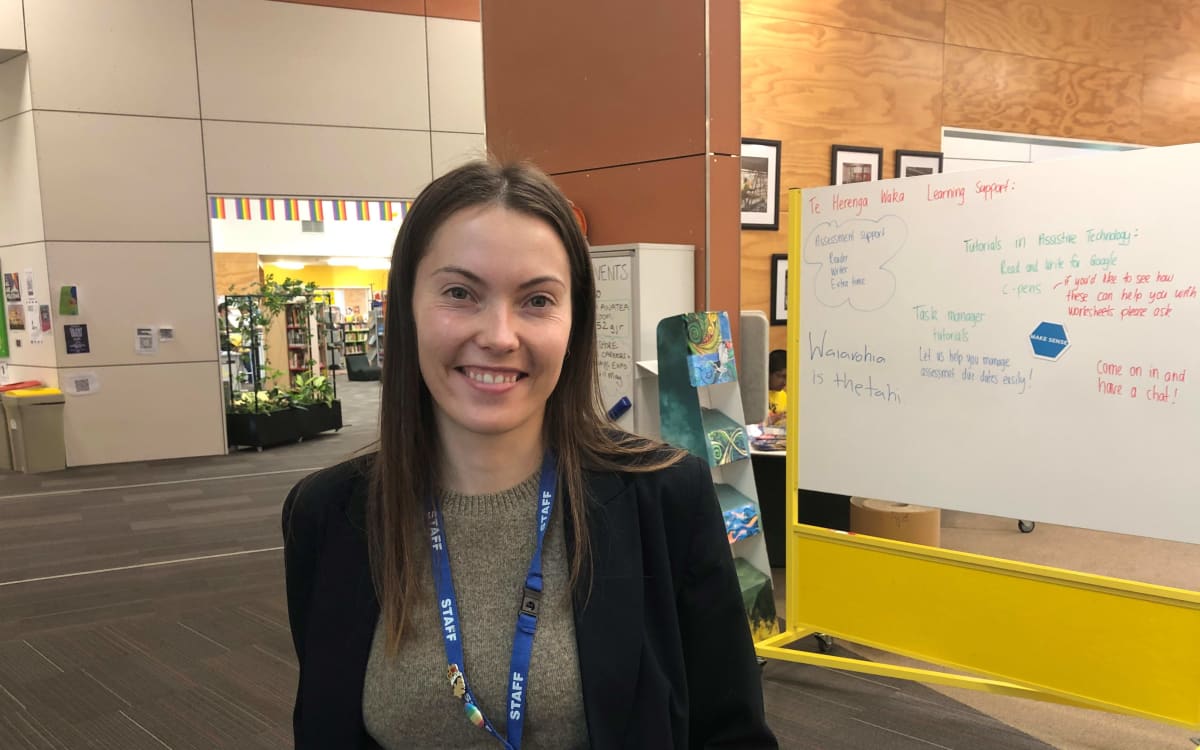
New Zealand's education system and student achievement have come under increasing scrutiny. But the outgoing principal of Hobsonville Point Secondary School says things aren't as bad as the headlines suggest.
It's a school built on the old runway of an air force base, where classes are called modules or spins, teachers are coaches, and there's a list of expectations instead of rules.
Welcome to Hobsonville Point Secondary School, a model for modern learning environments, or open plan classrooms.
"We've got a real strong drive to create an environment where it's safe for those journeying through adolescence to practise being adults, rather than being focused on controlling kids to the nth degree," says Maurie Abraham, the founding principal of the 10-year-old school in Auckland's north west.
At this school that means no uniforms, no bells, and everyone is on first name terms.
"Is this a module or a spin?" Abraham asks three students sitting together. We've turned left off the runway-turned-corridor, into a large space where junior students are gathered.
It's nothing like a traditional classroom with a door and four walls, or desks in rows with the teacher at the front.
"I think it's a module," replies the student. Abraham explains that a module has two teachers and combines two subjects, such as social studies and food.
Critics call modern learning environments an experiment, with no proof they are better for the students. Abraham disagrees and says if he had his career all over again, he would put more trust in the students.
Abraham is retiring at the end of this term because he's 65. But he also explains to The Detail during a tour of the school why he's against the Ministry of Education's expansion plans for it.
It currently has 770 students and is built for 1350, but the ministry wants to grow the roll to 2500 students.
People from other parts of the country, and overseas, are visiting the school about once a week to see how it works, but Abraham says many schools continue with the traditional model because people are comfortable with it.
"We're in a stage of transition," he says. "Most professions and industries have gone through transformation or change and it's difficult, it takes time."
Abraham says his job when the school was built was to match the curriculum and the pedagogy – the method of teaching –to a building designed to be flexible, visible and connected.
"One of the things we believed was that kids in open learning spaces moderate their volume and they moderate their behaviour, because they're not locked away in a cell where it's easy to be a bit of a dork."
Phoebe Smith tells The Detail why she chose the school for her first job as a visual arts teacher, and the benefits of cross-curricular or co-teaching.

"I've taught with an English teacher, maths teacher, social science."
Smith says despite its success, the school still has to deal with issues like high absenteeism. She says students are struggling with the fallout of Covid-19, with high levels of anxiety.
That can translate to fear of speaking up in class, because they have spent so much time behind the screen.
"Learning to bring those skills back and speak in front of people and discuss your ideas out loud and have the confidence to do that kind of thing," she says.
Abraham also gives his take on absenteeism, why the school doesn't offer NCEA Level 1, teacher strikes, and the future of education more broadly.
Hear more about what it's like going to school at Hobsonville Point in the full podcast episode.
Find out how to listen to and follow The Detail here.
Stay up-to-date by liking us on Facebook or following us on Twitter.








